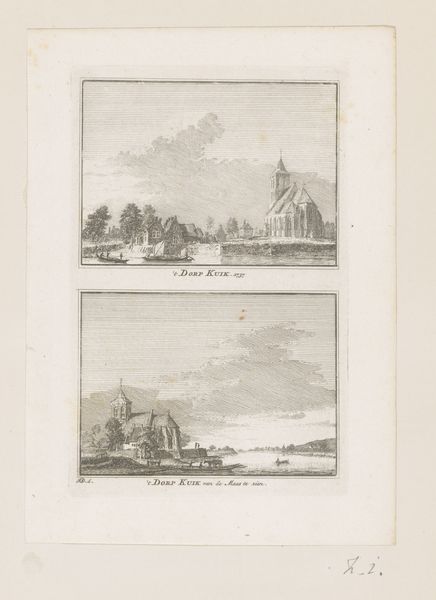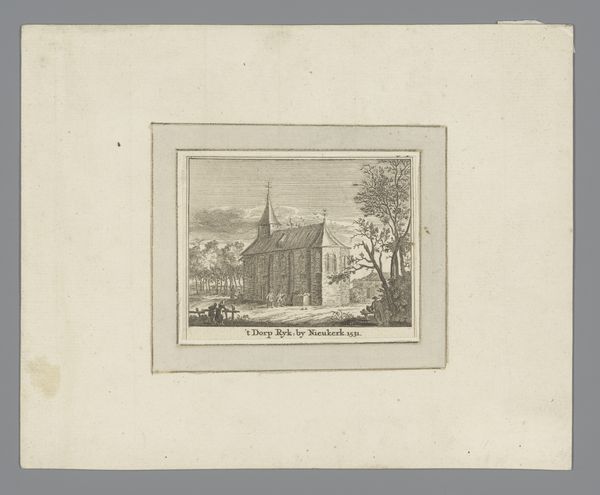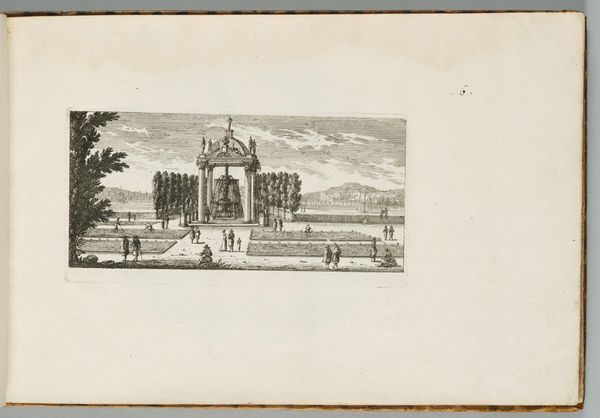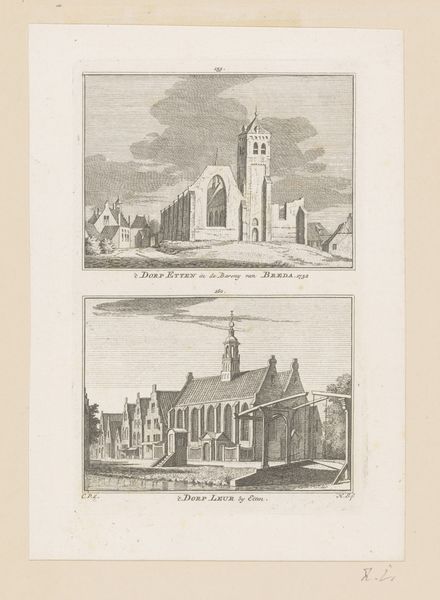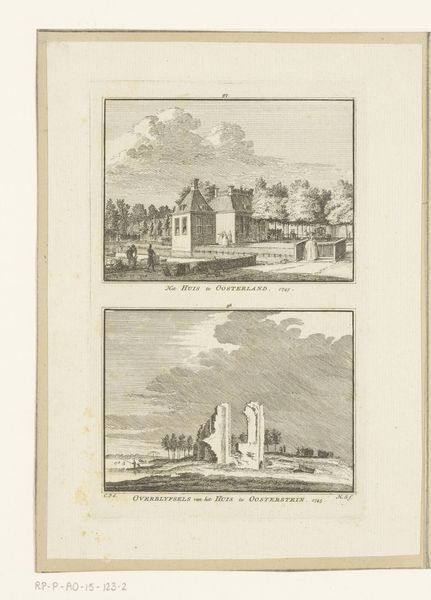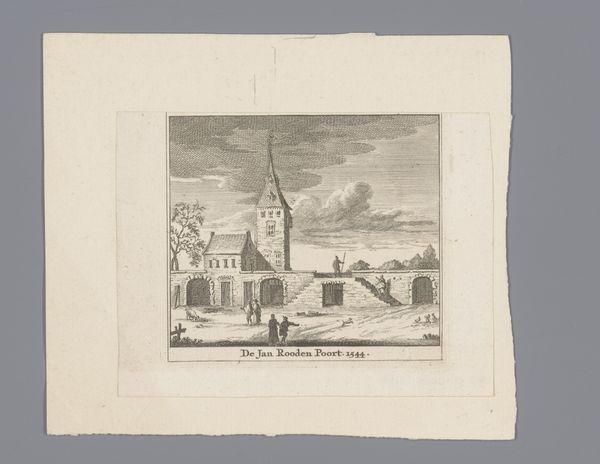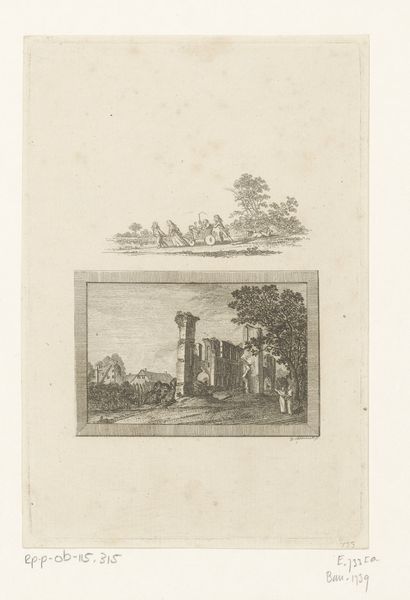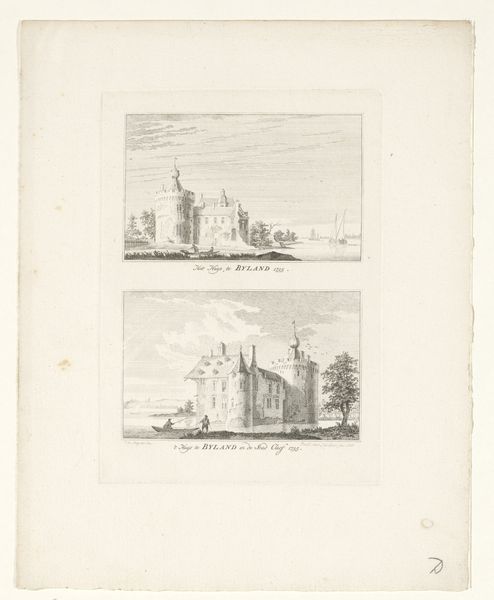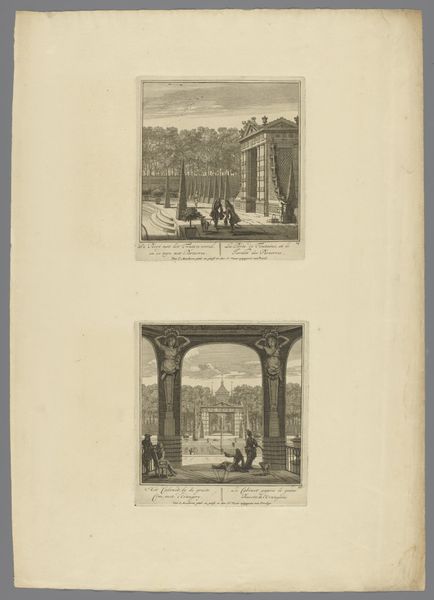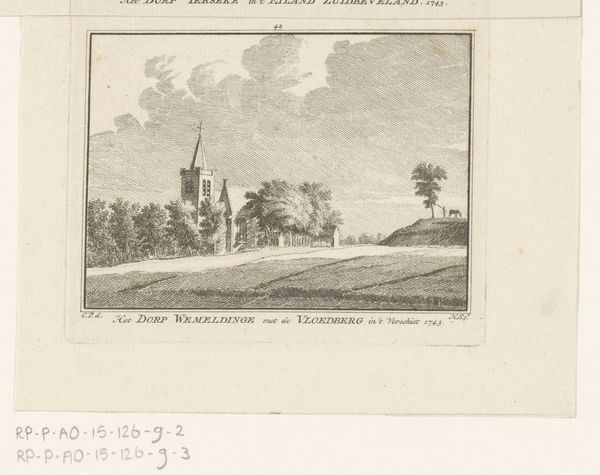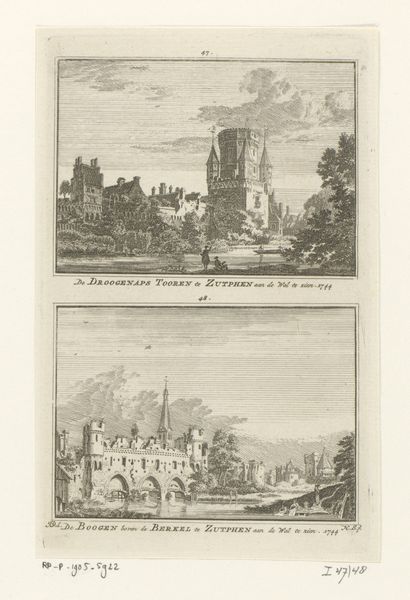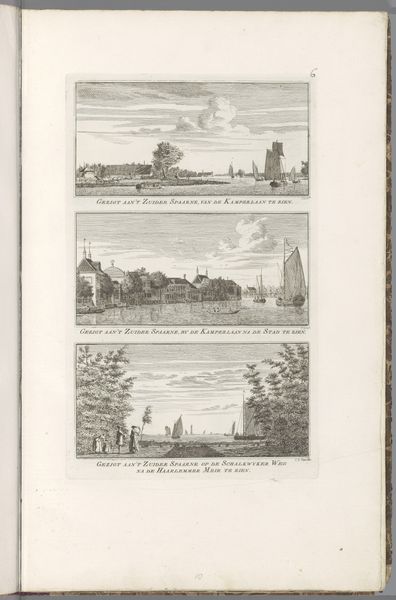
drawing, print, etching, architecture
#
drawing
#
dutch-golden-age
# print
#
etching
#
landscape
#
house
#
architecture
Dimensions: height 81 mm, width 113 mm, height 82 mm, width 113 mm
Copyright: Rijks Museum: Open Domain
Curator: This print, "Gezichten op Huis Kostverloren bij Amsterdam," presents two views of the House Kostverloren near Amsterdam. Created between 1727 and 1733 by Abraham Rademaker, it combines etching and engraving techniques typical of the Dutch Golden Age landscape tradition. Editor: Immediately striking! There's such a poignant contrast—the upper image almost dreamlike with the building appearing grand, while below, that same structure appears worn and reduced, its reflection sombering the water. Curator: Indeed, the visual structure underscores this temporal dimension. Rademaker masterfully employs line and shadow to delineate the architectural details and capture the house in two distinct states. Consider the semiotic implications of representing the building’s evolving narrative through precise artistic choices. Editor: The title hints at the decay, right? "Kostverloren"—"Lost Costs"— a home meeting its ruin, like time reclaiming stone. Rademaker's line work conveys not just the shape of the building, but almost the wind that whispers through its crumbling facade. What were people feeling as houses became old? What kind of loss? Curator: It is not unreasonable to consider your point; it evokes a complex discourse on wealth, legacy, and the transient nature of human endeavors during that era. Technically, note how the horizontal lines in the sky emphasize the width, and thus emphasize the overall horizontal landscape—while the lines of the architectural structure do the opposite. Rademaker's organization reflects an interest in not just documentation, but careful balance of opposing perspectives and forms. Editor: It does almost seem like the artist himself knew about the philosophical undertones that were embedded. So now, standing before these mirrored images, I don't feel loss, but transformation—a whispered promise, if we look closely enough. Curator: Rademaker’s artistic decisions create layers that provide fertile ground to ask deeper questions about representation and perception. Editor: Rademaker captured a subtle story, like a folded note left on a windowsill. It's about seeing the soul of the place across all time.
Comments
No comments
Be the first to comment and join the conversation on the ultimate creative platform.

